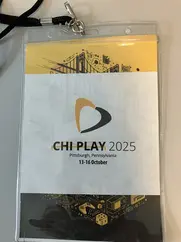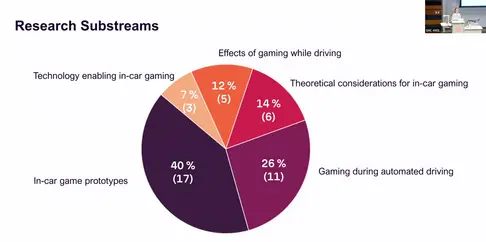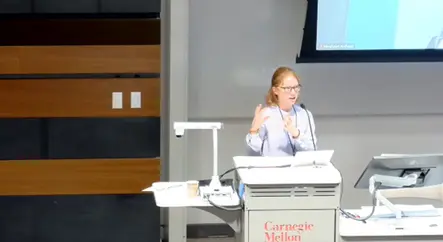Our Research about In-Car Gaming at the CHI PLAY 2025 in Pittsburgh
This year, our research group was represented at the international conference CHI PLAY 2025 in Pittsburgh – one of the leading academic venues in the field of playful human-computer interaction.
The paper by Johanna Eiting, Jonathan Stief, and Benedikt Morschheuser presents a scoping review of the emerging research field of in-car gaming. As gaming becomes an increasingly integrated part of everyday life, it’s also gaining relevance as an in-car experience. Despite growing interest, there has been a lack of structured overview of the main research areas and characteristics of this phenomenon. With our paper, we aim to provide exactly that.
We were excited to share our work at CHI PLAY and contribute to the international conversation about the many spaces in which play can happen.
But it wasn’t just the research and presentation that made the conference special – the event itself was a real highlight.
CHI PLAY thrives on its playful atmosphere: there were countless exciting game prototypes to try out, creative workshops, inspiring keynotes, and plenty of opportunities to connect with researchers from around the world. Between deep discussions, friendly competitions, and testing out new games together, the vibe was open, curious, and genuinely enjoyable.
More infos on the paper:
In-Car Gaming: A Scoping Review and Future Agenda
Authors: Johanna Eiting, Jonathan Stief, Benedikt Morschheuser
Abstract: While gaming increasingly permeates many facets of our daily lives, it is also gaining relevance as an in-car experience. However, despite the growing interest in in-car gaming within both research and practice, we lack a structured understanding of the phenomenon’s main research fields and prevailing characteristics. Thus, this paper presents the findings of a scoping review of 42 relevant papers on gaming in cars. We identified f ive emerging research substreams: in-car game prototypes, gaming during automated driving, theoretical considerations for in-car gaming, effects of gaming while driving, and technology enabling in-car gaming. Furthermore, we provide an overview of the research’s major characteristics about the game, gaming device, vehicle, and user. We reflect on trends recognized in our review, discuss contradictory results, for instance, regarding safety, and question whether a unique in-car gaming experience may exist. We propose research questions based on identified trends and gaps to guide future HCI research in this field.
Find the paper here: In-Car Gaming: A Scoping Review and Future Agenda | Proceedings of the ACM on Human-Computer Interaction




